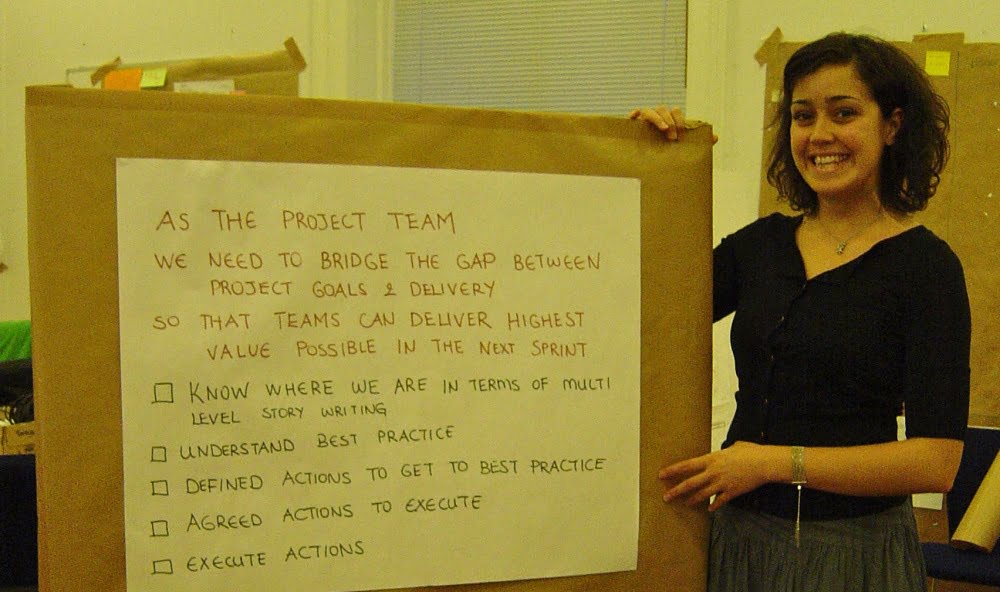Option Value
Product Development involves significant uncertainty. Whether we like it or not, we are operating in the realms of complexity: where cause and effect are interrelated in ways that can only be understood afterwards (if at all). The more innovative the product or service we are developing, the more complex the environment is likely to be.
A sensible strategy in the presence of uncertainty is to keep your options open and avoid making commitments earlier than you have to. Even better than simply retaining options can be to actually create additional options.

How does this affect decision-making?
Decision-makers first need to understand the value of retaining and creating options, and then make timely decisions to exploit them. They should seek to improve both their ability to generate options AND their ability to respond quickly. One of these by itself is not sufficient.
What this means is that fast decisions are not the same as effective decisions. The right decision at the right time is an effective decision. Committing early by making a fast but premature decision actually destroys value by reducing flexibility. More speed, less haste!
Some decision making frameworks, like RAPID, can lead to too much emphasis on the efficiency of the decision-making process – effectively ignoring the value of preserving and creating options. The risk is that preserving options is seen as weak or slow, leading decision-makers to actually impair value by reducing flexibility, painting the organisation into a corner. By prematurely destroying options you increase risk, something that decision-making frameworks tend to skate over.
Probe, Sense, Respond
For most of what modern executives do these days, speed and efficiency needs to go hand-in-hand with a Probe > Sense > Respond approach to decision-making.
The word “Probe” gives us some clue as to the sort of decisions we should be favouring. It is not bold action, diving head-first into unknown waters — or committing to large investments of time, money or scarce development resource. It is more like making small safe-to-fail experiments rather than betting the farm. This may not feel bold or courageous, but it is the more rational and economically sensible approach.
The “Sense” that follows means we need to have created the necessary feedback loops in order to understand the system better. We are looking for information, perhaps about the market, or the technology or how fast/slow, easy/difficult or cheap/expensive the initiative is likely to be. We may also discover opportunities adjacent to our current idea that turn out to be far more valuable than our original one. Setting a bold target many months in the future for launching a new product or service can mean putting the blinkers on, cutting off interim feedback loops, rich with new information. Conversely, frequent demonstrations of working products that are developed incrementally and iteratively can help us see, hear and feel how the solution fits together and how customers and users are likely to react.
Which bring us to “Respond“, where we get a chance to react to the information we’ve generated and consider the next step. Recent security breaches at Target demonstrate the opposite of this. Target’s security team received numerous warnings in plenty of time to prevent 40 million customers having their credit card details stolen. Unfortunately, they were asleep at the wheel. This is a perfect example of a system where the feedback loop was there, but for whatever reason, nobody responded in time.

Not all options are valuable though. Some can be expensive to create and/or hold and have little longer-term upside. We are looking to retain and create options that improve the asymmetry of the payoff function. Critically, for options to have any real value, there needs to be feedback loops by which someone (with sufficient authority to make quick decisions) receives signals about uncertainties and responds. There is little point retaining, creating or maintaining options if there is no-one “at the wheel” ready to respond to the information that is being generated. Again, Probe > Sense > Respond – and quickly.
The degree of optionality in your product development system might be considered one of the key variables in measuring “agility”. If agility requires the ability to change direction quickly, this requires options. Retaining, creating and maintaining flexibility is an important component of value in product development.
A few (optional?) resources related to the subject of Real Options:



